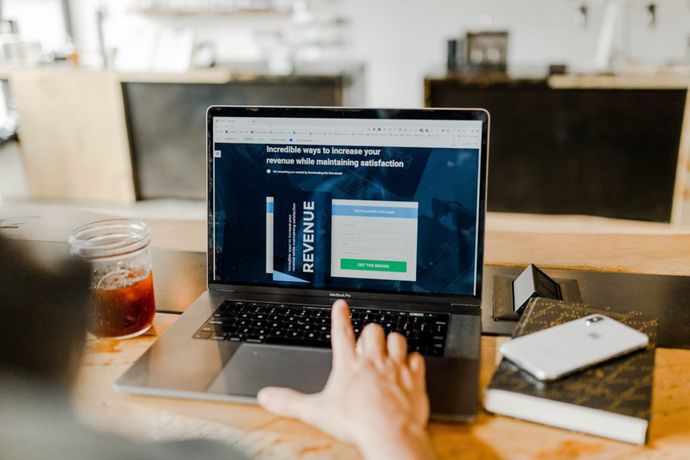RMSs – a modern way to make more money
The technology in hospitality is constantly changing. Currently, the evolution is driven by the rise of cloud-based systems which among other things considerably widens the integration possibilities for hotels. Nowadays hoteliers can choose between various types of systems and build their hotel tech stack according to each hotel’s needs. Revenue Management Systems (RMSs) are one of these types.

Although they are very closely related to PMSs (most of them need to be integrated with a PMS to work correctly), and they help hoteliers increase their hotels’ revenue significantly, RMSs are not yet commonly implemented. Speaking from our experience, most of HotelTime Solutions’ clients don’t use a revenue management system. But regardless of this, we think there will be a time when almost every hotel will implement one.
The invention and functions of RMSs
Simply said, RMSs help hoteliers set up and optimize rates. Historically this was done differently – a hotel would set prices for the upcoming year and would publish them through available channels which meant typically a travel agency catalogue or a GDS connection. Because the catalogues could not change during the year and there was no online distribution, prices had to be set as fixed.
After some time, hotel technology evolved and with the rise of OTAs the number of channels where hotels published the prices increased. Hotels still signed contracts with travel agencies (with fixed, net rates), but they also published pricing through OTAs simultaneously. Later, channel managers came which enabled hotels to sell rooms through many more OTAs at the same time. Thanks to this, hotels became more visible, and people started to book rooms directly online via hotel websites or various channels like Booking.com.
Online distribution also allowed hotels to change their rates even daily, as there was no fixed contract managing prices for the whole year. Hotels have realised the potential in optimising their rates based on demand (or expected demand) and started employing Revenue Managers – people responsible for setting and updating prices to maximise total revenue of the hotel. But because making these decisions was becoming more and more complex, Revenue Management Systems were created to make the work of Revenue Managers easier and more accurate.
Compared to Revenue Managers, RMSs can make better pricing decisions and also make them more often (even a couple of times a day). RMSs are also able to consider more data points and more complicated factors than a human being. The priority of hoteliers could be now shifted from maximising occupancy (for fixed prices) to setting the right rate for each night and therefore maximising total revenue.
Types of RMSs
Not all RMSs are the same. They differ quite a lot. Depending on their features we can divide them into three groups:
We call the first type “rule-based RMSs”. These RMSs change the price per night according to pre-set rules or criteria. Rule-based RMSs differ according to the complexity of rules that can be set. A relatively simple rule would be changing the price according to the occupancy of a room type. A more complex rule can be, for example, considering the pricing of competitors. Rule-based RMSs may or may not be connected to the PMS (if so, it is typically a 1-way connection) to get more information about the hotel’s inventory (amount of total and available rooms per room type).
The second type is a more complex kind of RMS which takes multiple data points into account and can make significantly more complex decisions. The data points considered could typically be: competitors’ pricing, booking pace and pick-up of reservations, performance compared to the past, and expected future demand (e.g. will there be an event taking place in the area?). These RMSs would also consider hotel segmentation as a factor, such as a group or corporate bookings. That is why this type of RMS typically needs to have a solid 2-way integration with the PMS that provides it with complex booking and inventory data while the PMS can receive updated prices back.
The third type is the most complex one where the RMS would make the most complex decisions, typically for the largest hotels or resorts. These very complex systems are able to consider many more data points, including other (non-accommodation) revenue centres, calculate group displacement costs (decide if accepting a large group is desirable or not), or consider the hotel’s budget and P&L. These types of RMSs will always have a very complex integration with PMS and possibly other systems providing various data points.
Benefits brought by RMSs
There are two main benefits of using an RMS.
Firstly, an RMS can set prices very effectively based on a lot of different data – the amount of data it is considering depends on the concrete type of RMS – which can maximize the total revenue.
Secondly, an RMS helps Revenue Managers with day-to-day decisions, saving them a lot of time they would need to evaluate data manually and helping them make sure pricing decisions are as effective as possible to achieve planned revenue.
HotelTime Solutions and RMSs
At HotelTime Solutions, we believe that RMSs will become an essential part of a future hotel tech stack. We also believe that a complex 2-way integration with PMSs is essential to maximise any RMS potential. That’s why we have, as an open platform, developed a set of APIs available for RMS partners to use, are already integrated with various RMSs, and are committed to integrating more in the future.
Nowadays we have partnered with the following RMSs: Atomize, OutPerform, D-EDGE, RateGain and HotelPartner while we are continuously talking to more potential partners to offer a wide range of RMSs to our customers.